- News
- Reviews
- Bikes
- Components
- Bar tape & grips
- Bottom brackets
- Brake & gear cables
- Brake & STI levers
- Brake pads & spares
- Brakes
- Cassettes & freewheels
- Chains
- Chainsets & chainrings
- Derailleurs - front
- Derailleurs - rear
- Forks
- Gear levers & shifters
- Groupsets
- Handlebars & extensions
- Headsets
- Hubs
- Inner tubes
- Pedals
- Quick releases & skewers
- Saddles
- Seatposts
- Stems
- Wheels
- Tyres
- Tubeless valves
- Accessories
- Accessories - misc
- Computer mounts
- Bags
- Bar ends
- Bike bags & cases
- Bottle cages
- Bottles
- Cameras
- Car racks
- Child seats
- Computers
- Glasses
- GPS units
- Helmets
- Lights - front
- Lights - rear
- Lights - sets
- Locks
- Mirrors
- Mudguards
- Racks
- Pumps & CO2 inflators
- Puncture kits
- Reflectives
- Smart watches
- Stands and racks
- Trailers
- Clothing
- Health, fitness and nutrition
- Tools and workshop
- Miscellaneous
- Buyers Guides
- Features
- Forum
- Recommends
- Podcast
review
£6,500.00
VERDICT:
High-octane race bike with peerless shifting and braking - a scintillating pro-level ride
Weight:
7,730g
Contact:
At road.cc every product is thoroughly tested for as long as it takes to get a proper insight into how well it works. Our reviewers are experienced cyclists that we trust to be objective. While we strive to ensure that opinions expressed are backed up by facts, reviews are by their nature an informed opinion, not a definitive verdict. We don't intentionally try to break anything (except locks) but we do try to look for weak points in any design. The overall score is not just an average of the other scores: it reflects both a product's function and value – with value determined by how a product compares with items of similar spec, quality, and price.
What the road.cc scores meanGood scores are more common than bad, because fortunately good products are more common than bad.
- Exceptional
- Excellent
- Very Good
- Good
- Quite good
- Average
- Not so good
- Poor
- Bad
- Appalling
Merida’s Scultura Disc Team is a superb example of the emerging disc-braked race bike category. It’s an entertaining partner for maximum-effort rides, but carefully tuned so it won’t beat you up on long rides, as befits a bike intended for professional racing.
When the UCI allowed pro teams to use disc brakes, one of the first to jump onboard was Lampre Merida, and it was this, the Scultura Disc Team that they rode in the Tour of Flanders this year. A lot has happened since then, starting with Peter Sagan winning the race on rim brakes and at the time of writing, rim brakes are currently all you can use if you're racing, with the UCI suggesting it's not in a big hurry to change this.
Merida brought in a raft of disc-braked models to the Scultura range, with this the Team model sitting pretty at the top. Dripping in posh components, it's a serious bike at a very serious price. The Team is effectively the same bike raced by the pros, even down to the Lampre, Rotor and Continental decals on the frame, with just one or two changes: ours doesn't have a power meter and is fitted with consumer-friendly clinchers instead of the tubular tyres seen on the Lampre bikes.
Tech ed Mat had the opportunity to ride this bike at the launch back in the spring and had nothing but praise for it, noting in particular that it rode very much like the rim-braked version. That's notable, as making a race bike with disc brakes involves significant modification to the frame and fork, and inevitably results in changes to the geometry of a bike too.
Merida have two versions of the carbon fibre frame used in the Scultura disc, the CF4 and the CF2. This, the CF4, is the lightest (with an impressive claimed weight of 900g) and has the most aggressive geometry, as befits a bike designed for the pros. Our test bike is an XL (or 59), where both the seat-tube and the virtual top tube measurements are – wait for it – exactly 590mm. The head tube is 190cm. For those familiar with such metrics, the stack is 592mm and the reach is 409mm, making this a fairly racy setup. As I wasn't racing, I moved a 5mm spacer below the stem, allowing me a slightly higher position than that shown in our photos, and found it pretty comfortable.
While the Reacto is the aero bike in Merida's range, quite a bit of work has been done to improve the slipperiness of the Scultura, with NACA "fastback" tube profiles used to offer an aerodynamic benefit without overly deep frame sections. The 40mm deep carbon rims also contribute to a reduction in drag.
The frame itself is largely unpainted carbon, with only the decals and a matt topcoat over the top. A thick, lustrous coat of paint adds a surprising amount of weight to a bike, and this was designed primarily as a bike for racing, so it's got more of a business-like look. Merida have used a push-fit BB386 bottom bracket as well as through axles front and rear to maximise rigidity under power. I had no issues with creaking, and the bike wasn't box-fresh when it arrived with us, either.
The axles are the RAT standard developed by Focus. It's a winning piece of engineering, and one which is increasingly being licensed by other manufacturers, particularly for race bikes, as it enables super-fast wheel changes - much faster than other through-axles.
The bike we have here is the 2016 version. The frame's the same for 2017, as is the price, but the transmission is mechanical Dura-Ace rather than Di2, a spec change you can probably blame on the post-referendum drop in value of the pound against the dollar.
The ride
Disc brakes have tended to arrive on endurance bikes before their race brethren, but the Scultura is no Synapse or Defy. In order to accommodate the wider rear disc hub and 28mm tyres, Merida has lengthened the chainstays by a mere 8mm over the standard rim-brake Scultura, notably shorter at 408mm than the 415mm that Shimano recommended when it first launched road disc brakes. Combine that with steep angles (head tube 74 degrees, seat tube 73 degrees) and you've got a bike which is super reactive, responding almost to your thoughts. It's great fun to hustle on twisty roads, with the ample tracking stiffness giving you bags of confidence to hit the apex and smash it out the other side.
Looking over my testing notes, a word which appears more than once is "eager". This is a bike which feels like it converts all of your inputs into action. Whether that's mashing the pedals on a hill or in a sprint for the town sign sprint, or just threading a series of bends on a twisty backroad, the Scultura is game for whatever you've got.
But that would make it an uncompliant, tiring companion for an all day ride, right? Well, no. This is a bike which made the first appearance of its brief racing career at the Tour of Flanders, a race which features more than a few cobbles. Here, the bigger volume of the 28mm tyres and the long, unbridged seat stays combine to provide a decent level of comfort for a race rig. Some carbon bikes can be a bit rattly over broken tarmac, but Merida have managed to imbue the Scultura with a pleasingly damped feel on rougher surfaces.
The kit
This top-end model is fitted with Dura-Ace Di2 shifting, although it's far from being the complete groupset. The derailleurs, cassette and chain are from Shimano's top gruppo but that's it. The brakes are the non-series flat-mounted RS805 calipers, rather than the new Dura-Ace model launched earlier this year, operated by the ST-R785 shifters. The brakes, Dura-Ace or not, are simply brilliant. I've been running SRAM Rival hydraulics for the last few months, which are effective but – in my view – no match for these.
Dura-Ace Di2 shifting is flawless, literally never a single fluffed shift in about 1000km of testing. Shifting under power is serene, and I find that I simply shift gear more often when I'm riding a bike with Di2 - without the spectre of the botched shift, there's no reason to stay in a gear any longer than you need to, keeping your cadence where you want it. I have Ultegra Di2 on my race bike and to be honest, I think I would struggle to tell the difference between it and the Dura-Ace Di2 setup here.
Going back to the brakes, Merida has developed a unique mount for the rear caliper, with a machined aluminium heat-sink fitted between the brake and the chainstay. The reasoning goes that the front brake has no shortage of passing air to help cool it, whereas the flow past the rear is much less, meaning that temperature build up can be more. The Disc Cooler helps take the heat out of the caliper (and the disc itself) to maintain brake performance on long steep downhills. Look – they've made a video about it. For the types of hills we have around Bath, I couldn't tell you that I noticed any enhanced brake performance from this. If you ride down mountains then it may be of more benefit to you.
Merida have opted for a Rotor 3D crank set with NoQ (or, round) chainrings in a semi-compact 52/36 setup. The chunky aluminium arms are machined and drilled to offer a blend of stiffness and low weight. Rotor is a team sponsor for Lampre-Merida, so the team model having Rotor cranks makes sense. In use they were efficient and the shifting was quick and accurate.
As mentioned above, the wheels are probably not the same as used by Lampre Merida, but they're a very decent set nonetheless. We reviewed the Fulcrum Racing Quattro Carbon DB wheelset earlier this year, and I'd agree with Justin: they're a very nicely made set of mid depth carbon clinchers. The hubs in particular combine familiar Campagnolo quality with massively asymmetric spoke flanges, to help balance spoke tension.
The rims are 40mm deep and finished in UD (unidirectional) carbon rather than the 3k chequered look more commonly seen on carbon rims. Coming in at 1590g the pair, weight is competitive for a disc-brake clincher (lighter than the marginally deeper and much more expensive Zipp 303 disc-brake clinchers, for example). The rim profile, on the other hand, is somewhat closer to the traditional "V" shape than that favoured by Zipp, Swiss Side and an increasing number of others.
The theory goes that a fatter, U-shaped profile makes a rim less susceptible to the cross-winds, and I'd have to say this matches my experience. The Fulcrums here seemed a bit more prone to getting blown around than other wheels of a comparable depth I've tried. Not to the extent of a feeling of real instability, just a bit more grabby in gusts than some. One area where they are far better than almost any other carbon wheels I've used is – obviously – braking. Carbon rims make so much more sense with disc brakes.
Contact points are taken care of by FSA and Prologo. The carbon bar and seatpost are from FSA's K-Force collection, and the FSA OS-99 stem is made from forged aluminium which has a layer of UD carbon applied over the top. The Prologo Scratch 2 saddle has their CPC micro-suckers on the upper surface, to stop you sliding around. The Tirox (stainless steel) rails are almost the only significant part of the bike not made of carbon; even the seat-post clamp is made of the black stuff.
It's impossible to really isolate how much of the stiffness and/or comfort comes from these elements and how much comes from the frame and forks, but the overall result is extremely well-balanced, combining electric responses and genuine long-distance comfort.
The 52/36 chainset and 11-28 cassette is exactly the same as I have on my Rose X-Lite. It's a popular setup now giving a decent spread of gears to suit most riders on most terrains. Tellingly, on the familiar club chaingang route, I found myself repeatedly looking for a gear above 52/11, clicking pointlessly at the Di2 button to change up to a ratio that didn't exist. For my money that's a pretty strong indicator that this is a fast bike.
Weight
Let's talk weight, then. We weighed the Scultura Disc Team at 7.73kg, or 17lb. It's the largest frame size, and the addition of Di2 and disc brakes both contribute to the weight. All that being the case, it's probably further above the UCI limit than you might expect for this price. More than one person picked it up while I was testing it, setting it gently back down with a slightly disappointed look on their face. Six and a half grand is firmly in superbike territory, and the fact is that you can buy a bike for a third of that, weighing a kilo or more less.
If you're a hillclimber, then this probably isn't the bike for you. For everyone else, I'd urge you not to discount this bike purely on weight grounds. I've ridden it fast on lumpy rolling terrain, and up long, draggy climbs and it feels like a fast race bike. As we saw with the Specialized S-Works Tarmac Disc, it is possible to build a (smaller) race bike with Di2 and discs that comes in under 7kg, albeit at a higher price.
Conclusion
The Scultura Team Disc is a really involving ride that begs for full-gas efforts. Starting with the same frame used by the pros, Merida have fitted about the best braking and shifting that money can buy. I quite like the looks – Lampre black-white-pink is a welcome change from black-on-black or black-white-red – even if I'm not quite sure it looks like a £6,500 bike. At a similar price, the Specialized Venge Pro Disc Di2 trades Dura-Ace for Ultegra, with more of a focus on aerodynamics and a similar all-up weight. Trek's Domane 6.9 shares the Dura-Ace Di2 and disc setup of the Scultura, but with a significant wheel downgrade to hit the £6,000 price point.
Verdict
High-octane race bike with peerless shifting and braking - a scintillating pro-level ride
road.cc test report
Make and model: Merida Scultura Disc Team
Size tested: 57
About the bike
State the frame and fork material and method of construction. List the components used to build up the bike.
Frame Superlite CF4 carbon frame as used by the Lampre Merida team. NACA fastback profiled tubes and slimmed down tapered head tube for areodynamics. BB386 for exceptional stiffness when pedalling. Profiled seat and chainstays for comfort and integrated disc cooling fins
Fork Superlite - full carbon with tapered steerer - 1 1/8" to 1 1/4" with 12mm through axle.
Brakes Shimano Dura Ace hydraulic disc with cooling fin
Chainwheel Rotor 3D30 noQ 52-36
Derailleurs Shimano Dura Ace / Shimano Dura Ace, 22 speed
Cassette Shimano CS-9100, 11 speed,11-28
H-Bar FSA K-Force carbon with compact drop
H-B Stem FSA OS99 ultralight stem with titanium hardware -6 degrees
Hubs Fulcrum Racing Quattro disc carbon wheelset with 12mm through axles and R.A.T. system
Rim Fulcrum Racing Quattro disc carbon
Saddle Prologo Scratch 2 T2.0
Seat Post Merida EGM-light-27.2mm with 15mm lay back and ability to store Di2 battery
Shifters Shimano Ultegra disc, 22 speed
Spoke Double butted stainless steel (Black) straight pull
Tyres Continental Grand Prix 4000S 25mm Kevlar bead
Tell us what the bike is for, and who it's aimed at. What do the manufacturers say about it? How does that compare to your own feelings about the bike?
It's an out-and-out race bike ... but with disc brakes. The caveat wasn't needed for a while, but at the time of writing, the UCI is still not allowing disc brakes. It's aimed at those who like the eager, sharp-handling feel of a race like but see the benefits of discs. And have plenty of money, obviously.
Merida says:
Looking at the typical braking behavior of the average non-professional rider – letting the brake slide in the rear to keep a certain base speed and sharply using the front brake before corners – the advantages of disc brakes come into complete effect here. While there is still a good deal of controversy among professionals concerning the not yet sufficiently clear practicability of disc brakes in racing, they are clearly an asset to the ambitious hobby rider.
Frame and fork
Overall rating for frame and fork
10/10
Tell us about the build quality and finish of the frame and fork?
Flawless. Largely unpainted carbon, which shows off the neat layup. Neat cable and hose routing - I like the internal routing down the fork leg. Some expensive bikes have deep lustrous paint jobs like an Italian sports car - this is a race bike so it's more functional than that.
Tell us about the materials used in the frame and fork?
Carbon fibre - Merida don't say a lot more than that.
Tell us about the geometry of the frame and fork?
The team model uses this, the CF4 geometry, which is pretty racy. Our 59cm has a virtual top tube of 59cm and a seat tube that's exactly the same length. The headtube is 190mm long, which combined with a few mm of extra tyre clearance in the fork means it's not quite as low at the front as some.
How was the bike in terms of height and reach? How did it compare to other bikes of the same stated size?
Reach is 409mm and stack is 592mm, a similar ratio to that of Trek's most aggressive H1 geometry on the Madone, and slightly more aggressive than my Rose X-Lite (also a 59cm).
Riding the bike
Was the bike comfortable to ride? Tell us how you felt about the ride quality.
For what is unequivocally a race bike this is a particularly comfortable ride. A lot is down to the 28mm tyres, of course - I typically ran them with 85-90psi - but the frame is very well damped, not clattering and bouncing you over surface imperfections.
Did the bike feel stiff in the right places? Did any part of the bike feel too stiff or too flexible?
Pretty much spot on I'd say. The bottom bracket area is really chunky, as is the case with most modern race bikes, and combined with a meaty downtube this makes for a bike that transfers all of your effort into forward motion.
The long, unbridged seatstays do a decent job of taking out some off the sting from bumps before it reaches the saddle.
How did the bike transfer power? Did it feel efficient?
Very. Stamp on the pedals and smash those climbs.
Was there any toe-clip overlap with the front wheel? If so, was it a problem?
I had no issues at all.
How would you describe the steering? Was it lively, neutral or unresponsive? Lively. 74 degree head tube and 73 degree seat tube make for a sharp-handling bike despite the wheelbase being longer than a typical rim-brake racer.
Tell us some more about the handling. How did the bike feel overall? Did it do particular things well or badly?
It goes where you think about going, reacting rapidly to steering inputs. It's an exciting bike to ride. Occasionally I found that bumps in the road would push me one way or another mid-bend.
Which components had the most effect (good or bad) on the bike's comfort? would you recommend any changes?
28mm tyres definitely make a difference, but generally I found the overall setup pretty comfortable.
Which components had the most effect (good or bad) on the bike's stiffness? would you recommend any changes?
The frame is stout in the places you want it to be, and the use of RAT thru-axles helps too. That said, when out of the saddle I could sometimes elicit some brake rotor rub, suggesting a small amount of flex.
Which components had the most effect (good or bad) on the bike's efficiency? would you recommend any changes?
The wheel/tyre combo is a fast one. Thinking of efficiency, however, it's really the utterly dependable brakes and shifting that stands out most in my mind though, even if this doesn't really relate so much to power transfer.
Rate the bike for efficiency of power transfer:
10/10
Rate the bike for acceleration:
8/10
There's no sensation of flex, but the fact is that it's not as light as some race bikes and that slightly impacts upon acceleration.
Rate the bike for sprinting:
10/10
In a sprint you want maximum power transfer efficiency and very lively handling so the bike goes where you want as soon as you think it. Tick, on both counts.
Rate the bike for high speed stability:
7/10
This is a bike set up for lively, exciting handling, rather than stability. It doesn't feel unstable, but it's not a cruiser or an endurance bike.
Rate the bike for cruising speed stability:
8/10
Rate the bike for low speed stability:
8/10
Rate the bike for flat cornering:
10/10
Incredibly responsive frame goes where you want as soon as you think it.
Rate the bike for cornering on descents:
10/10
Rate the bike for climbing:
8/10
The drivetrain
Rate the drivetrain for performance:
10/10
Rate the drivetrain for durability:
10/10
Rate the drivetrain for weight:
8/10
There are lighter drivetrains, such as mechanical SRAM Red.
Rate the drivetrain for value:
5/10
It's pretty flawless ... but so is Ultegra Di2 at a rather lesser price point.
Tell us some more about the drivetrain. Anything you particularly did or didn't like? Any components which didn't work well together?
The irony here is that it's by no means "full Dura Ace Di2". With the non-series disc brakes and shifters and Rotor chainset, it's only the derailleurs, chain and cassette that are Dura Ace. That being the case, it works utterly flawlessly - truly a great piece of bicycle engineering.
Wheels and tyres
Rate the wheels for performance:
8/10
Good performers - not mega-light but fast and tough. Slighly more susceptible to crosswinds than I'd expect for the depth.
Rate the wheels for durability:
10/10
Great hubs and strong, tightly-build wheels - Justin thrashed these wheels in his review and had nothing but praise for them.
Rate the wheels for weight:
7/10
A decent weight for the depth, but maybe slightly more than you'd expect at this price point. The pros will use tubs, making for a lighter setup.
Rate the wheels for comfort:
9/10
With the 28mm tyres, comfort is thoroughly decent
Rate the wheels for value:
7/10
Tell us some more about the wheels.Did they work well in the conditions you encountered? Would you change the wheels? If so, what for?
Good all-round performers - they're fast, strong and dependable. Given that it's a pro-spec bike, I would only perhaps suggest changing them for the tubular tyres and wheels that they pros would use.
Rate the tyres for performance:
6/10
They're fast and I found they were decently tough too - no punctures while riding through a fair bit of glass. However, wet grip isn't as good as I remembered, and certainly less good than other high-end tyres.
Rate the tyres for durability:
8/10
Rate the tyres for weight:
7/10
A larger tyre will weigh more, but these aren't bad for 28s.
Rate the tyres for comfort:
9/10
Rate the tyres for value:
7/10
Controls
Rate the controls for performance:
10/10
Dura Ace Di2 and hydraulics is pretty much as good as it gets (disclaimer - I've not used eTap yet)
Rate the controls for durability:
10/10
Rate the controls for weight:
5/10
Both Di2 and hydraulic discs do add weight, but it's a trade that's well worth making in my view.
Rate the controls for comfort:
10/10
Rate the controls for value:
4/10
The issue (for most of us) is that the significantly less expensive Ultegra Di2 system is near as dammit as good.
Tell us some more about the controls. Any particularly good or bad components? How would the controls work for larger or smaller riders?
The ergonomics and performance of the shifters are excellent; gear shifting is flawless every single time, and the brakes are as good as it gets. I've been running SRAM hydraulic brakes on my commuter bike and this was a reminder that I much prefer Shimanos.
Your summary
Did you enjoy riding the bike? Yes
Would you consider buying the bike? No. I don't have that sort of money.
Would you recommend the bike to a friend? Potentially if they had the money.
Rate the bike overall for performance:
10/10
Rate the bike overall for value:
6/10
Use this box to explain your score
This is a scintillating ride, rewarding you every time you climb aboard. The frame is beautifully judged, offering a delicious combination of excitement, lively handling and a surprising amount of comfort (thanks in no small part to there being enough clearance for 28mm tyres). It's a huge amount of money, however, and some of it has gone on shiny Dura Ace parts where (to my mind) Ultegra would do just as good a job. That's because it's a team bike - and the pros don't need to worry about such things.
About the tester
Age: 37
I usually ride: On-one Bish Bash Bosh My best bike is: Rose X-Lite CRS
I've been riding for: Over 20 years I ride: Most days I would class myself as: Expert
I regularly do the following types of riding: road racing, time trialling, cyclo cross, commuting, touring, club rides, sportives, general fitness riding, fixed/singlespeed, mtb,
Jez spends his days making robots that drive cars but is happiest when on two wheels. His roots are in mountain biking but he spends more time nowadays on the road, occasionally racing but more often just riding.
Latest Comments
- BikingBud 4 sec ago
But what is speeding?...
- slc 56 sec ago
An excellent plan. In fact the Church Road site has parking spaces for rent from time to time, which are snapped up, though not quite as quickly as...
- webbierwrex 6 min 31 sec ago
At first I thought 'Cool, is this a commercial device to hot wax chains while on the bike' and then I read it and was quickly disappointed.
- Hirsute 10 min 7 sec ago
It's important to look at doge's failings when a handful of people/organisations in the UK think it is something to emulate....
- Vo2Maxi 17 min 39 sec ago
I did indeed! 🤦♂️ Corrected now, thank you.
- Tom_77 22 min 13 sec ago
Eventually managed to get my hands on these, ordered from Cycling 2000 (looks like a few other UK shops also have them)....
- Tom_77 32 min 9 sec ago
My brother bought me this mug - no occasion, just "saw this and thought of you".
- maxdabrit 37 min 29 sec ago
It will be even worse to read when the missing bottle cages are added.
- eburtthebike 41 min 4 sec ago
"A new study suggests that electric scooter schemes appear to reduce the risk of cycling collisions by around 20 per cent — University of Bristol...
- Rendel Harris 1 hour 3 min ago
Indeed, I spent one of the happiest years of my life living in Bath as a postgraduate student, just about that point on your map where Bathwick...







































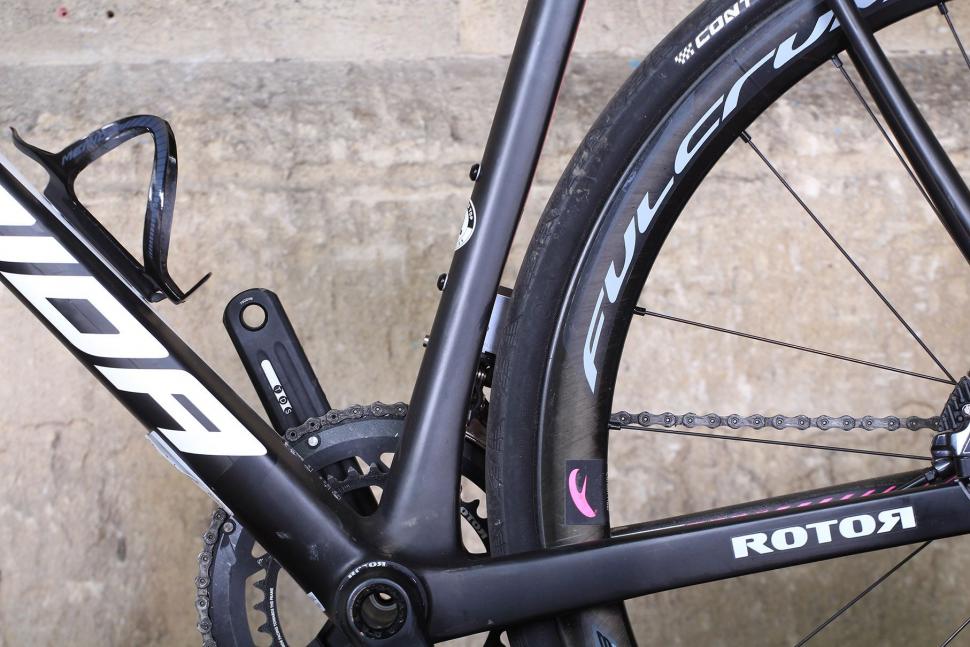



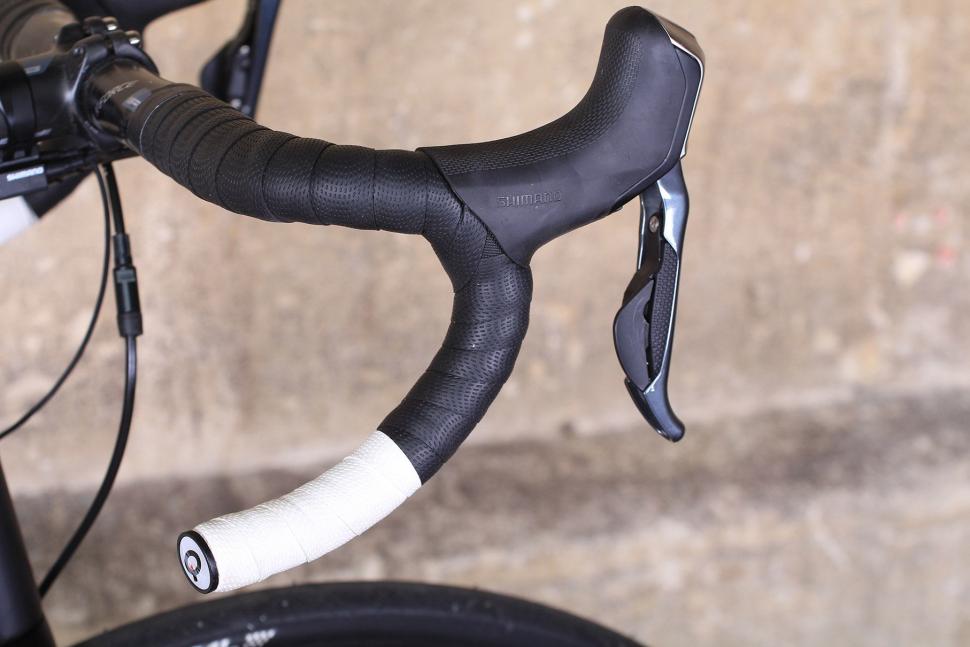


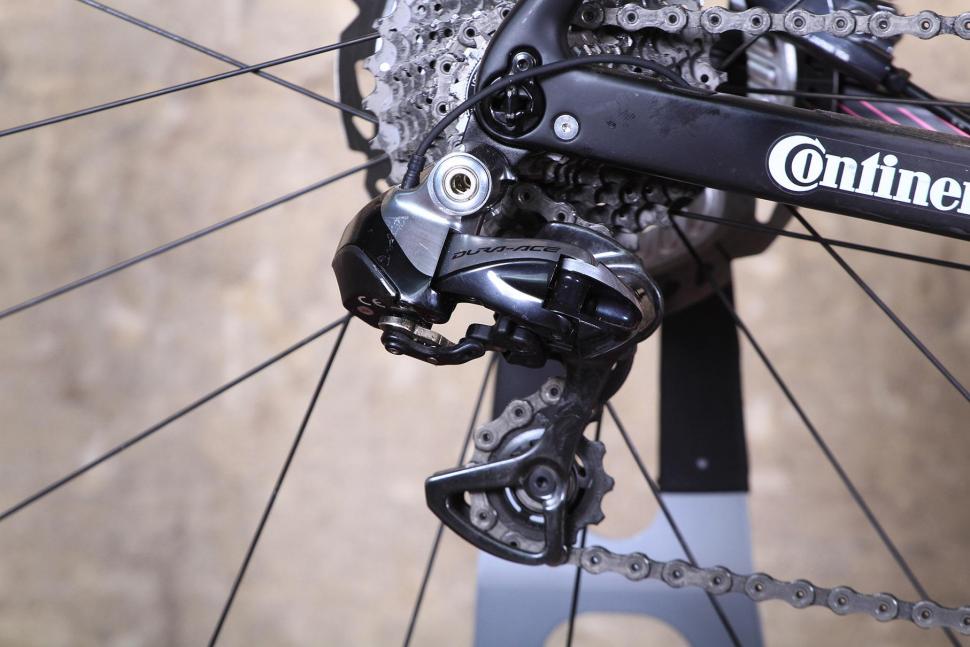
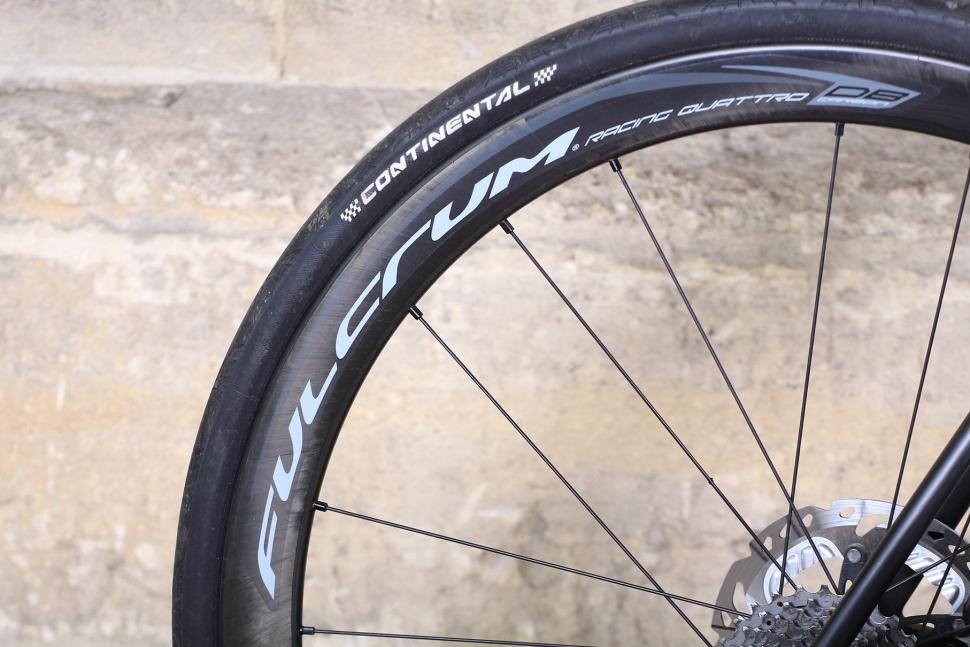
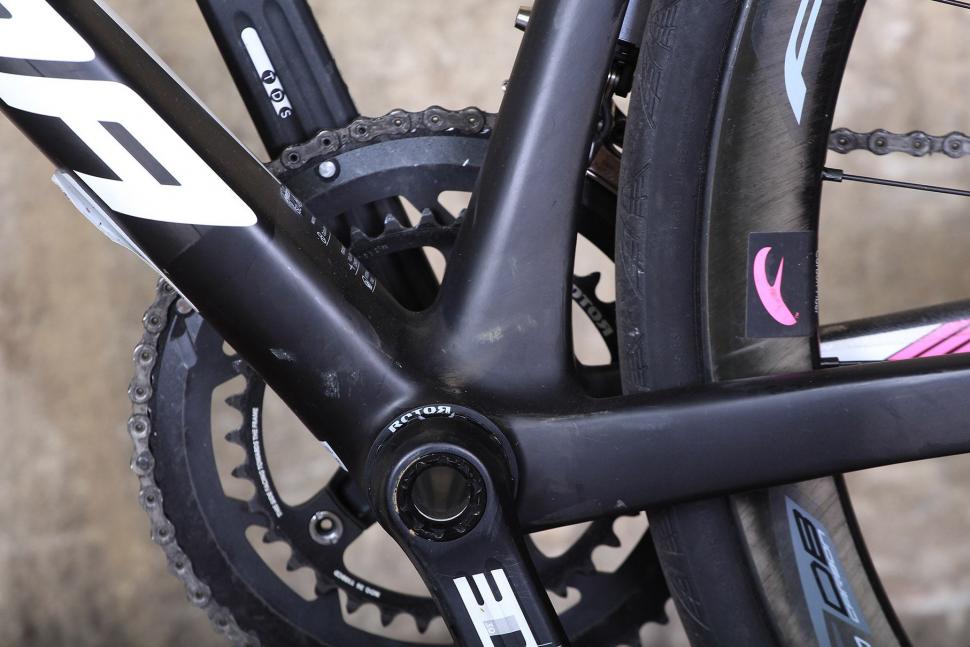
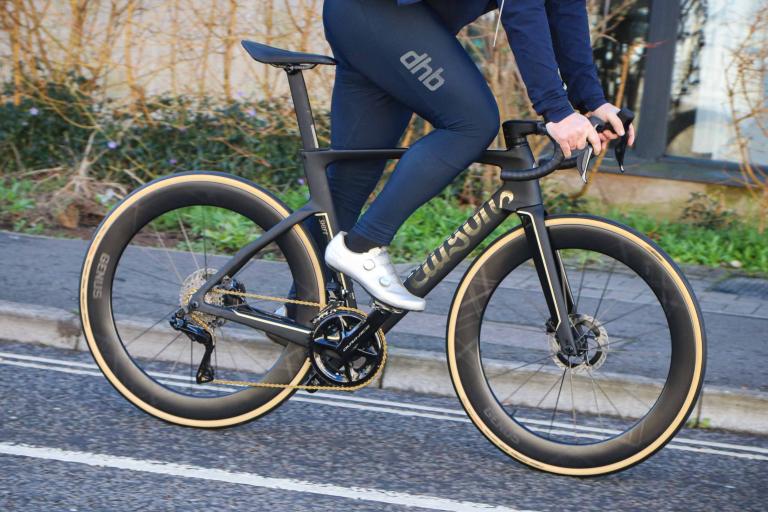
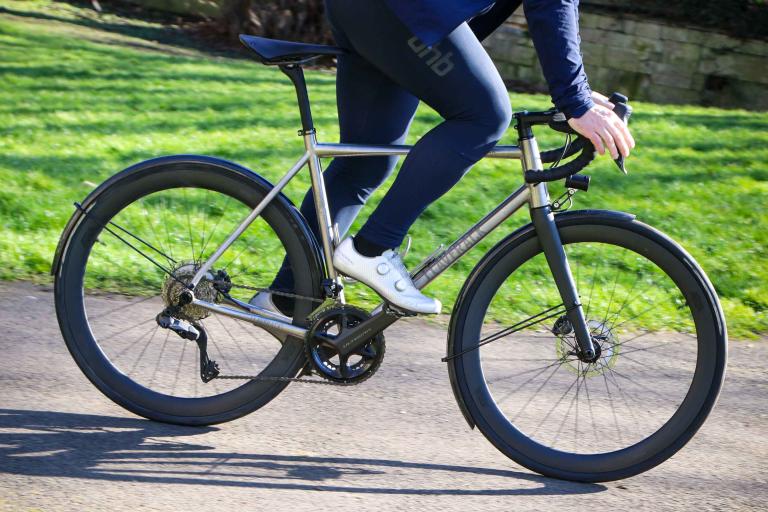


Add new comment
8 comments
Seems like a lot of cash. V similar spec Cube Agree Disc SLT is currently £2599 at Cycle surgery. No pink involved either. Even at full list price it's still half the cost of the Merida.
https://www.cyclesurgery.com/p/cube-agree-c-62-slt-disc-16-Q2210205.122....
Same weight give or take a few gms, same wheels, brakes, dura ace mechanical inc semi compact chainset, aero tubing. I just bought one and despite giving away a little weight to my Bianchi Specialissima it's handling is very close.
At what point will people stop judging a bike's value purely on the groupset and components, while ignoring the differences in the frame?
I could get an high end Audi, it will have 4 alloy wheels, heated leather seats, three seats in the back and a radio. A porsche GT3 or similar still has the alloy wheels but forget the heated seats and probably won't have a radio or any rear seats either, but it will cost a fair amount more. Guess which performs better.
For most of us we'd be happy with the Audi or the Porsche, and probably won't go anywhere near the limit to fully appreciate the differences in performance.
The same could be said about the Cube and the Merida, and so if you are Mr Average Joe, who won't get near the limits of performance of either bike, go for the Cube, but that doesn't mean the Merida isn't good value, it just isn't good value for you.
Oh, and if you want 99% of the Merida for 50% or less of the cost, take a look at the Scultura Disc bikes a little lower down the range.
I take your point regarding the subjectivity of value but with those wheels (£880ish at wiggle) Merida is hitting you about £4K for the frame assuming mechanical dura ace. And with the build coming to nearly 8kg it's not really GT3 status, more the pimped Audi you describe. There's more to bikes than wheels and components of course, but that's still a mighty expensive frame for one of the worlds biggest bicycle producers to turn out. If the ride justifies the price though, fine.
And £4k for a much more limited ultra top end pro level frame should perhaps be expected. Don't Team Sky Pinarellos has a full bike value of around £10k? Stip the components of and the frame would be more than the Merida.
The cube mentioned in the previous link will not be on the same level - close maybe, but not the same. At the level of the Merida you are very definately into the realm of deminishing returns.
It's not a particularly flat chaingang
Cadence of 100rpm on a gear of 52/11 gives you 37mph. Must be a pretty rapid chaingang to be needing more gears!
If he goes out with the Bath CC Chaingang fast group that I've been out with a few times - yes it is a very fast chaingang. Generally 30-32mph on the flat sections, and I generally finish the approx. 45 mile ride with 290+ watts average. I'm not at all surprised to read that Jez can spin out a semi-compact in a group scenario
However good Merida bikes might be (and I always forget that they are such a big player in the bike market), I struggle to think of them in any other way than those terrible, terrible Eurosport adverts.
Merida........MORE BIKE
Right...